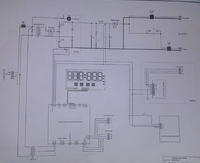muhibraza
Member level 1
hello I need to implement the following circuit for charging a 24V battery. Can someone guide me how do I write the algorithm for driving the SCRs through PWM ? And I also need to know which parameters are to be considered while charging the battery. And also the best method to calculate the firing angle for triggering the SCRs.

